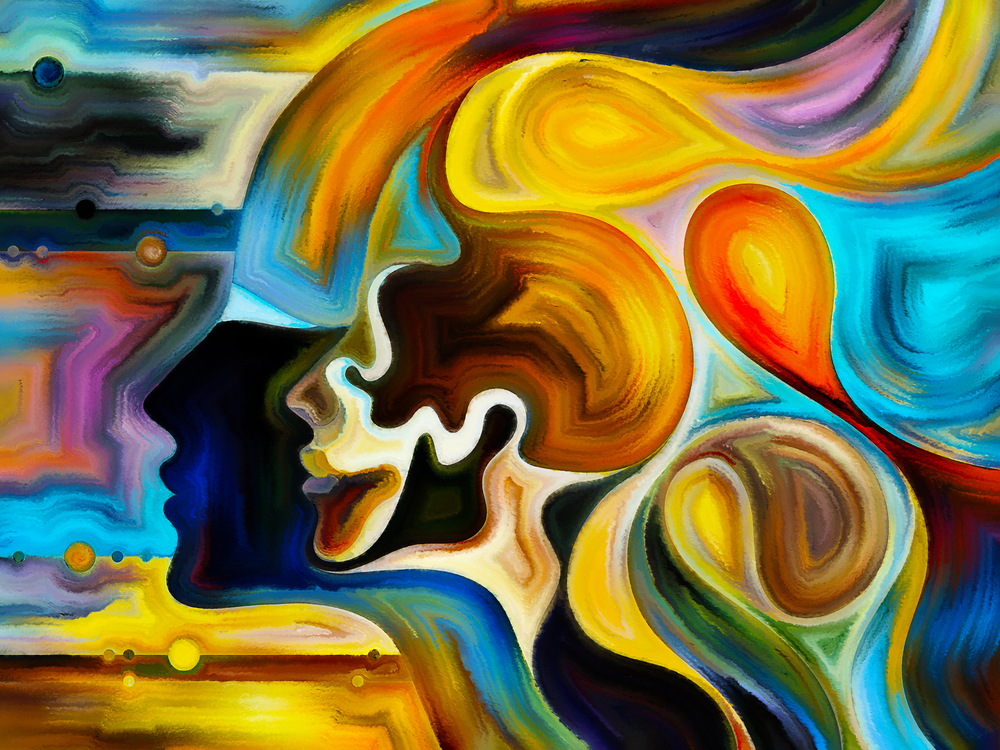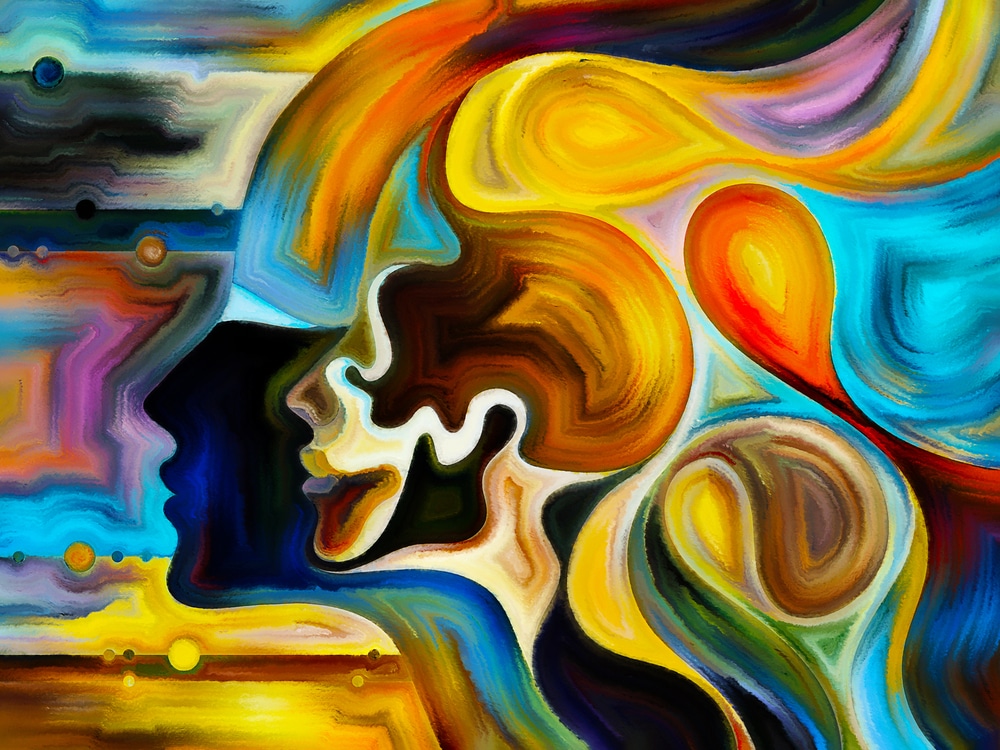
17 May Is CBD Really Non-Psychoactive?

Understanding how cannabidiol (CBD) exerts its myriad effects on human physiology is a work in progress. Thus far, scientists have identified more than 60 different molecular pathways through which CBD operates. It is known, for example, that CBD acts through multiple receptor-independent channels and it also binds to various receptors in the brain, including serotonin 5HT1A (which contributes to CBD’s anti-anxiety effect), TRPV1 (which contributes to CBD’s anti-psychotic effect), the nuclear receptor PPAR-gamma (regulates gene expression), and the orphan receptor GPR55, among others.
CBD and tetrahydrocannabinol (THC) have similar molecular structures, but CBD does not directly stimulate CB1 and CB2, the canonical cannabinoid receptors, like THC does. THC, marijuana’s principal psychoactive component, makes a person feel high by binding to CB1, the most abundant protein receptor in the brain and central nervous system.
THC fits snugly into a special pocket – an “orthosteric” binding site – on the CB1 receptor. The image of lock-and-key is apropos for orthosteric binding: THC, the molecular key, fits into the CB1 receptor lock and turns it on, which triggers a signaling cascade on a cellular level that inhibits the release of other neurotransmitters (thereby protecting the brain from too much excitation). It’s one of the many reasons why THC is such a remarkable therapeutic substance.
CB1’s orthosteric binding site is also the “keyhole” for THC’s endogenous cousins, anandamide (the first endocannabinoid compound discovered in the mammalian brain) and 2AG (our most abundant endocannabinoid). Likened to the brain’s own marijuana, these endogenous cannabinoid compounds fit into the same orthosteric binding pocket as THC and activate some of the same signaling mechanisms.
New data versus old science
Since the CB1 receptor was discovered in 1988, it’s been an article of faith among cannabinoid researchers that CBD, unlike THC, has little binding affinity for CB1. But this notion is based on old science.
New data emerging from the international cannabinoid research community indicates that CBD interacts directly with the CB1 receptor in ways that are therapeutically relevant. But CBD parks at a different docking site on CB1 that is functionally distinct from THC’s orthosteric binding site. CBD attaches to what’s known as an “allosteric” binding site on the CB1 receptor.
When cannabidiol, an allosteric modulator of CB1, docks at the receptor, it does not initiate a signaling cascade. But it does impact how the CB1 receptor responds to stimulation by THC and the endogenous cannabinoids. Allosteric modulation of CB1 changes the conformation (shape) of the receptor, and this can have a dramatic impact on the efficiency of cell signaling.
Every cell membrane has lots of receptors for many types of messenger molecules, which influence the activity of the cell. It’s not uncommon for a receptor to have two distinct binding sites or loci that can be activated by various drugs and endogenous compounds. The orthosteric site is the switch that a drug turns on, whereas an allosteric modulator can either amplify or decrease a receptor’s ability to transmit a signal depending on how the allosteric modulator changes the conformation of the receptor.
To extend the lock-and-key metaphor: If the orthosteric binding site is the lock on a door, then the allosteric binding site, when activated, makes the lock easier or more difficult to open. A “positive allosteric modulator” changes the shape of the receptor in a way that potentiates receptor signaling, while a “negative allosteric modulator” will reduce receptor transmission.
Healing without the high?
Numerous pharmaceuticals target orthosteric binding sites for receptor stimulation. Big Pharma has also brought to market several synthetic allosteric modulators of other receptor systems (Mimpara, Piracetam, and Selzentry, for example). There is serious interest among drug companies in allosteric modulation of the endocannabinoid system. In theory, if not practice, allosteric modulators can prime the system for amplification or inhibition by fine-tuning receptor transmission with amazing subtlety.
Full-on stimulation of CB1 can deliver therapeutic benefits, but THC’s psychoactivity intrinsically limits its medical utility, according to Big Pharma catechism. For the medical constabularies, getting high is by definition an adverse side effect. Allosteric modulation raises the prospect of increasing CB1 receptor activity without causing disconcerting dysphoria or needless euphoria.
Scientists at the University of Aberdeen in Scotland have synthesized a positive allosteric modulator of CB1 to treat pain and neurological disorders. When researchers at Virginia Commonwealth University tested the compound on mice, this experimental drug, known as “ZCZ011,” had no psychoactive effects of its own, but reduced neuropathic and inflammatory pain by boosting the CB1 receptor’s response to anandamide, an endocannabinoid compound.
Research into allosteric modulation of the endocannabinoid system is still in its early phases. Allosteric modulators of CB1 were first discovered in 2005. Ten years would elapse before scientists at Dalhousie University in Halifax, Canada, reported in the British Journal of Pharmacology that cannabidiol is a negative allosteric modulator of CB1 in vitro. This means that CBD lowers the ceiling on the ability of THC and endogenous cannabinoids to stimulate CB1.
The Canadian research team identified the exact molecular niche where CBD parks at the CB1 receptor, a protein which consists of 472 amino acids strung together in a crumpled chain that wraps around the cell membrane seven times. Scientists can mutate CB1 receptors with precision, targeting one amino acid at a time. Data generated by mutational analysis pinpointed positions 98 and 107 on CB1’s amino acid chain as the key docking loci for CBD.
A Dimmer Switch
Negative allosteric modulation of CB1 is conceptually similar to a dimmer switch on a light fixture. CBD alters cognition and improves mood; it creates mood lighting for the brain and dims the ‘strobe light’ triggering seizures. As a negative allosteric modulator of the CB1 receptor, CBD shows particular promise for treating conditions associated with endocannabinoid excess or overactivity (obesity, metabolic disorders, liver disease, cardiovascular issues), whereas a positive allosteric modulator that enhances CB1 receptor signaling could be helpful for diseases linked to endocannabinoid deficits (such as anorexia, migraines, irritable bowel, fibromyalgia, and PTSD).
It should be noted that allosteric modulators typically are unable to alter receptor conformation unless the orthosteric binding site is also stimulated. CBD can modulate CB1 receptor signaling only when THC or another cannabinoid compound is active at the orthosteric binding site. In terms of whole plant cannabis therapeutics, CBD’s efficacy as an allosteric modulator requires the co-presence of THC.
THC and CBD work in tandem; they are the power couple of cannabis therapeutics. Given the intimate synergies between these two plant compounds, how much sense does it make to attribute psychoactivity exclusively to one (THC) and not the other (CBD)? Is it really accurate to say that CBD is a “non-psychoactive” substance?
Researchers have demonstrated that CBD confers antipsychotic, anxiolytic (anxiety-reducing), and antidepressant effects. If CBD can relieve anxiety or depression or psychosis, then obviously cannabidiol is a profound mood-altering substance, even if it doesn’t deliver much by way of euphoria. Perhaps it would be better to say that CBD is “not psychoactive like THC,” rather than repeating the familiar and somewhat misleading refrain that “CBD is not psychoactive.”
The identification of cannabidiol as a negative allosteric modulator that binds directly to the CB1 receptor challenges antiquated assumptions about CBD and sheds new light on its medicinal potential. In turn, as our scientific understanding and therapeutic experience deepens, the description of CBD as non-psychoactive may fall by the wayside.
Jahan Marcu is Chief Science Officer at Americans for Safe Access with 14 years of experience in Cannabis research and regulations. Ali S. Matthews is the pen name of an endocannabinoid researcher currently studying allosteric modulators and the mammalian brain, who wishes to protect the privacy and identity of his federally funded laboratory. Martin A. Lee is the director of Project CBD and the author of Smoke Signals: A Social History of Marijuana – Medical, Recreational and Scientific.
Copyright, Project CBD. May not be reprinted without permission.
Sources
Abood ME. “Allosteric Modulators: A Side Door.” J Med Chem. 2016 Jan 14;59(1):42-43.
Bogna Ignatowska-Jankowska, et al. “A cannabinoid CB1 receptor positive allosteric modulator reduced neuropathic pain in the mouse with no psychoactive effects.” Neuropsychopharmacology. 2015 July 29.
Elham Khajehli et al. “Biased agonism and biased allosteric modulation at the CB1 receptor.” Molecular Pharmacology. 2015 June 4.
Kukarni PM, et al. “Novel Electrophilic and Photoaffinity Covalent Probes for Mapping the Cannabinoid 1 Receptor Allosteric Site(s).” J Med Chem. 2015 Nov 3.
Laprairie RB, et al. “Cannabidiol is a negative allosteric modulator of the type 1 cannabinoid receptor.” Br J Pharmacol. 2015 Jul 27.
Straiker A, et al. “Aiming for allosterism: Evaluation of allosteric modulators of CB1 in a neuronal model.” Pharmacological Research 2015 Jul 23.


Sorry, the comment form is closed at this time.